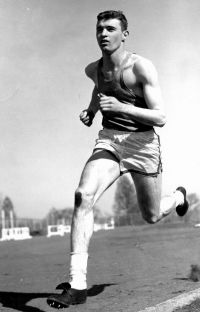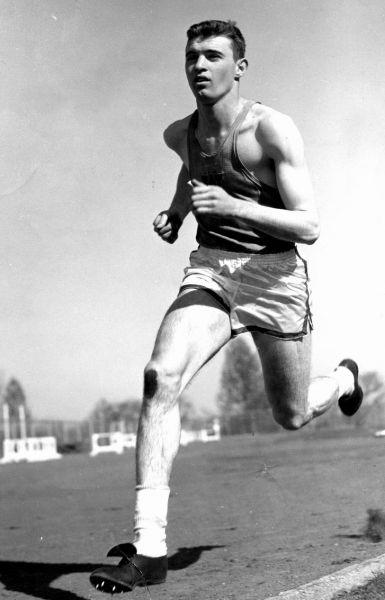From humble beginnings on northern Vancouver Island, Terry Tobacco went on to become one of our country's fastest men, competing in two Olympics and two British Empire Games. The native of Cumberland was discovered at the age of 15 by Victoria "Flying Y" coach Bruce Humber after winning the 100- and 220- yard races at the 1952 Island high school championships. That began a distinguished membership with the Flying Y club, one that saw Tobacco set records at B.C. and national meets and gain the opportunity to represent his country. At the 1954 British Empire Games in Vancouver, where Britain's Roger Bannister won the "Miracle Mile," the 17-year-old speed merchant provided a local highlight. He won the bronze medal in the 440-yard race, and then, his dynamic anchor leg in the 4x440-yard relay helped Canada win a silver medal. Those results earned him the 1954 B.C. Top Male Athlete award. Tobacco was twice Pacific Coast Conference champion in the 440 while at the University of Washington and was an NCAA all-American in 1959. At the 1956 Olympics in Melbourne, his anchor time of 45.3 seconds in the 4x400 -metre relay semi-final, was faster than the gold-medal winning time in the 400! After winning bronze medals in the 440 and 4x440 at the 1958 Commonwealth Games in Cardiff, Wales, he finished off his international career for Canada at the 1960 Olympics in Rome.
For a guy who claimed to have little or no athletic ability, middle distance runner Cliff Salmond achieved notable success on the track. Sporting the perfect physique for a runner, the long and lean Salmond initially specialized in the mile at Victoria High School and afterward won races on the Island and Lower Mainland at everything from a half mile to two miles. At age 20 he set a new Canadian two-mile record of nine minutes, 41 seconds, a performance that primed him for the 1948 Canadian Olympic trials. He won the 1,500 and 5,000 metres in Vancouver, setting a national record of 15:23 in the 5,000 in the process. The Olympic competition in London proved tough, however, and left Salmond on the sidelines for the finals. He kept up his chase for sporting glory back home while apprenticing as a machinist and attempted to qualify for the 1950 British Empire Games. He managed a second-place finish at the trials but it was not enough to secure a spot on the team and he retired from active competition at year's end. It may have been the end of Salmond's athletic career, but in 1992 he got the bug again and began training as Victoria prepared to host the 1994 Commonwealth Games. Retired from his real estate career at age 65, Salmond was readying himself for a different competition, the B.C. Seniors' Games. He proved he still had the competition edge, breaking two age-group records on the track that first year and setting three in 1994. Through 1999 he was still active as a runner and a coach for the Lower Island zone seniors track team.






